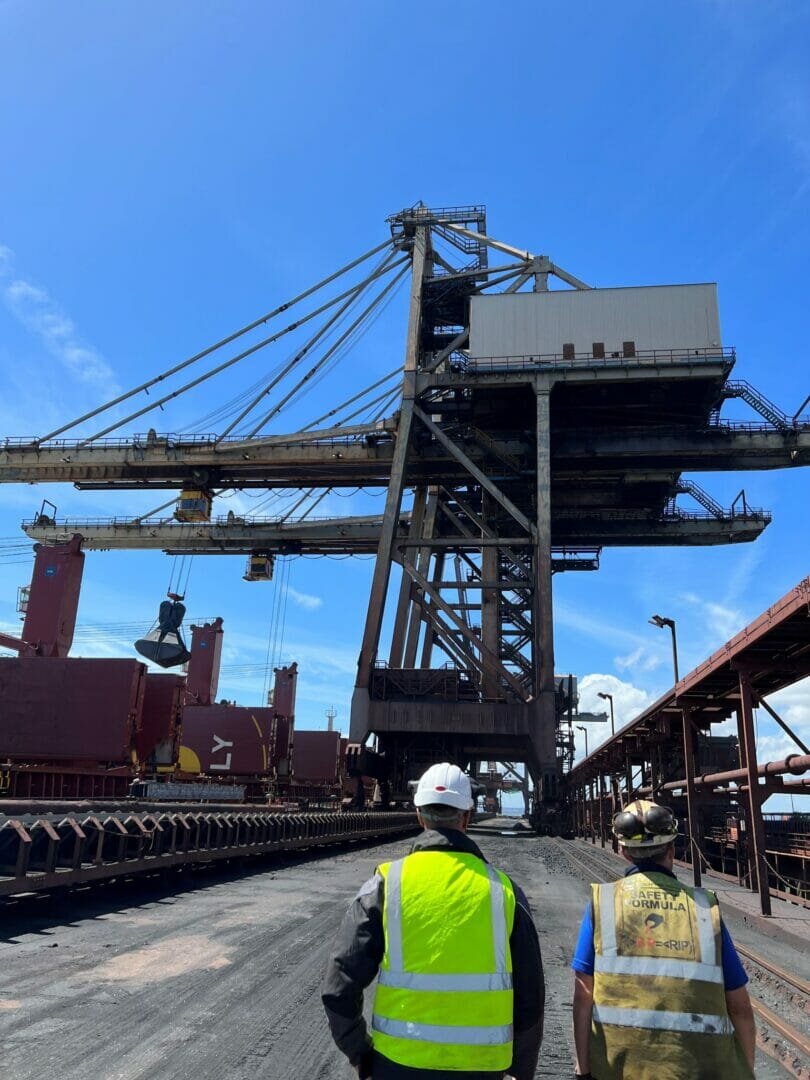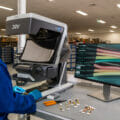How retrofitting magnet controllers can improve crane ROI.
The versatility and ability to carry heavy loads means that cranes have been an essential asset in industries ranging from construction and steel manufacturing to marine and mining for over a century now. While cranes are built for durability and often in use for decades, operators should consider how they can introduce newer technologies alongside the crane to improve productivity and safety while reducing costs. Here Andy Swann, business development manager for cranes and power transmission at cranes specialist CP Automation explores.
Power and motion control are essential when operating cranes because they directly impact the safety, efficiency and productivity of operations. Control is particularly important for magnetised cranes, which are used to lift metal, often heavy, materials. Moving these heavy loads with precision is key to minimising risk of damage to people on site, the load, nearby equipment and the crane itself.
The problem with magnets
To move heavy loads, crane magnets generate powerful magnetic fields, which can be difficult to control as the type of load changes. The strength of the magnet often remains the same, but load variability will change regularly — if the weight and shape of the load changes, it can be difficult to control the moving and unloading of materials safely and efficiently.
The environment can also interfere with the magnetic field. Other magnetic equipment on site could interfere with the crane, causing problems with control equipment and moving materials. Similarly, weather conditions, such as changes in temperature and humidity, can affect the magnetic force. Traditionally, crane magnets are often controlled by a simple on and off switch. This system may be efficient but, over time, switching a system on and off will generate heat, causing the magnet to lose energy and capacity over time and use.
Crane upgrades
Engineers may understand that they need to improve the power and motion control of their equipment fleet, but such retrofits can seem like a costly upfront investment. Some sites still use cranes that were built decades ago — including Matterson and other types of cranes developed in the 1960s — because of their durability.
If the crane is still in good working condition and isn’t costly to maintain businesses may want to retrofit advanced tools to upgrade their existing infrastructure instead of investing in new equipment. Digital magnet controllers, for example, use advanced control technology to regulate the magnetic force of the crane’s magnet. Users can programme the system to adjust the strength of the magnet when it carries and unloads equipment — for example, operators can choose whether to place the load in one pile or scatter it.
By retrofitting a controller, operators can more effectively control and monitor parameters like magnet current, voltage and temperature, and can automatically cut power in case of a fault. By more closely monitoring these conditions, operators can reduce magnet heating by up to 50 per cent, minimising the need for magnet changeouts. Therefore, they can realise savings not available to them before, and directly and positively impact the return on investment (ROI) point of discussion. Solutions are also available with uninterrupted power supply (UPS) or battery back-up (BBU) systems to mitigate power outages and further enhance safety protocols.
Some businesses are already retrofitting advanced technologies onto their cranes but may feel that it isn’t delivering ROI. This could be because we often see businesses turning to multiple suppliers for various components, which can be costly and confusing. Instead, by working with a cranes expert that can offer the entire solution, businesses can more easily understand the cost benefits of each technology.
By better controlling magnet technology, crane operators can improve productivity, reduce maintenance costs and ensure that materials are handled in a controlled and precise way. Instead of buying new equipment or buying new equipment from multiple sources, finding an expert that can retrofit the most useful systems onto existing infrastructure enables companies to get value from their crane technology in the most cost-effective way.
For more advice on getting return on investment from your crane technology, visit www.cpaltd.net/industries/cranes/








